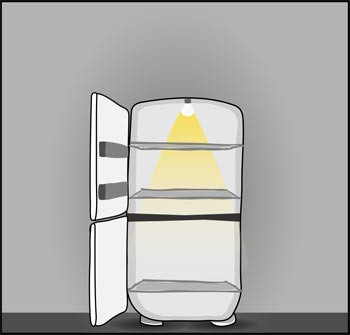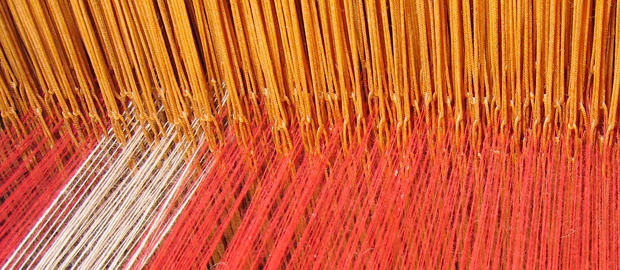"APIs for the Physical World" entries

The Intimacy of Things
At what layer do we build privacy into the fabric of devices?
Sign-up to attend Solid 2015 to explore the convergence of privacy, security, and the Internet of Things.
In 2011, Kashmir Hill, Gizmodo and others alerted us to a privacy gaffe made by Fitbit, a company that makes small devices to help people keep track of their fitness activities. It turns out that Fitbit broadcast the sexual activity of quite a few of their users. Realizing this might not sit well with those users, Fitbit took swift action to remove the search hits, the data, and the identities of those affected. Fitbit, like many other companies, believed that all the data they gathered should be public by default. Oops.
Does anyone think this is the last time such a thing will happen?
Fitness data qualifies as “personal,” but sexual data is clearly in the realm of the “intimate.” It might seem like semantics, but the difference is likely to be felt by people in varying degrees. The theory of contextual integrity says that we feel violations of our privacy when informational contexts are unexpectedly or undesirably crossed. Publicizing my latest workout: good. Publicizing when I’m in flagrante delicto: bad. This episode neatly exemplifies how devices are entering spaces where they’ve not tread before, physically and informationally. Read more…

Who should and should not be talking to your fridge?
A reflection on the social impacts of smarter hardware in the physical world.
Attend Solid 2015 to explore the IoT’s impact on privacy and security.
 Here’s the scenario today: I am out of milk, and my refrigerator sits there, mute and unsympathetic. Some time in the 90s, I was promised a fridge that would call the store when I was out of milk, and it would then be delivered while I, ignorant of my dearth of dairy, went about my business. Apparently such predictions were off. Someone forgot to tell my fridge manufacturer to put sensors, software, and networking gear into their products.
Here’s the scenario today: I am out of milk, and my refrigerator sits there, mute and unsympathetic. Some time in the 90s, I was promised a fridge that would call the store when I was out of milk, and it would then be delivered while I, ignorant of my dearth of dairy, went about my business. Apparently such predictions were off. Someone forgot to tell my fridge manufacturer to put sensors, software, and networking gear into their products.
But there is hope. The dumb objects in the analog physical world are being slowly upgraded. From the very sexy telemetry systems in new BMWs to the very unsexy pallets of lettuce in a warehouse, Things That Heretofore Were Blind and Mute are getting eyes, ears, mouths, and in some cases, brains. This is evolution, not revolution, and while it is still slow-moving, it’s beneficial to reflect on some of the social impacts of smarter hardware in the physical world. Read more…

What you need to know for the hardware-software convergence
Core competencies and essential reading from hardware, software, manufacturing, and the IoT.
As I noted in “Physical and virtual are blurring together,” we now have hardware that acts like software, and software that’s capable of dealing with the complex subtleties of the physical world. So, what must the innovator, the creator, the executive, the researcher, and the artist do to embrace this convergence of hardware and software?
At its core, this is about a shift from discipline toward intent. Individuals and institutions — whether they’re huge enterprises, small start-ups, or nonprofits — must be competent in several disciplines that increasingly overlap, and should be prepared to solve problems by working fluidly across disciplines.
To use Joi Ito’s example, someone who wants to develop a synthetic eye might begin to approach the problem with biology, or electronics, or software, or (most likely) all three together. Many problems can be solved somewhere in a large multidimensional envelope that trades off design, mechanics, electronics, software, biology, and business models. Experts might still do the best work in each discipline, but everyone needs to know enough about all of them to know where to position a project between them.
Below you’ll find the core competencies in the intersection between software and the physical world, and our favorite books and resources for each one.
Electronics for physical-digital applications
- Practical Electronics, by John M. Hughes: To know what’s possible and where to start, it’s essential to understand both the analog and digital sides of electronics. This is O’Reilly’s authoritative introduction to both analog and digital electronics, with information on circuit design, common parts and techniques, and microcontrollers.
- Raspberry Pi Cookbook, by Simon Monk: The Raspberry Pi is rapidly becoming the standard embedded computing platform for prototyping and experimentation, with enough computing power to run familiar interpreted programming languages and widely supported operating systems.
- Arduino Cookbook, by Michael Margolis: The Arduino microcontroller offers a fluid interface between digital and physical; it’s highly extensible and accessible to people with no prior experience in either electronics or code.

Physical and virtual are blurring together
Key signals from hardware, software, manufacturing, and the Internet of Things.
![]()
This essay updates a November 2013 article. We’ve expanded it in light of the success of our first Solid conference in May 2014, where we tested many of these ideas, and the announcement of our next Solid conference in June 2015. In addition to this update, you can stay in the loop on the latest developments in the space through our weekly newsletter.
Real and virtual are crashing together. On one side is hardware that acts like software: IP-addressable, programmable with high-level procedural languages and APIs, able to be stitched into loosely coupled systems — the mashups of a new era. On the other is software that’s newly capable of dealing with the complex subtleties of the physical world — ingesting huge amounts of data, learning from it, and making decisions in real time.
The result is an entirely new medium that’s just beginning to emerge. We can see it in Ars Electronica Futurelab’s Spaxels, which are LED-equipped quadcopters that make up a drone swarm to render a three-dimensional pixel field; in Baxter, which layers emotive software onto an industrial robot so that anyone can operate it safely and efficiently; in OpenXC, which gives even hobbyist-level programmers access to the software in their cars; and in SmartThings, which ties web services to light switches.
The new medium is something broader than terms like “Internet of Things,” “Industrial Internet,” or “connected devices” suggest. It’s an entirely new discipline that’s being built by software developers, roboticists, manufacturers, hardware engineers, artists, and designers. Read more…
